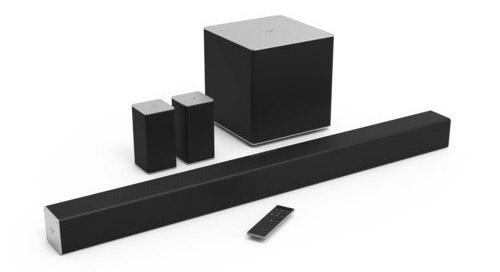Hi Chris,
I just read your awesome article on the new Sony sound bars: New Sony Sound Bars do HDMI-Switching, High Res Audio and HDCP 2.2 for 4K Ultra HD TV Support.
I really enjoyed it. I was going to ask about connections. Recently I bought a 7.1 optical cable for my TV thats compatible with my soundbar - the sound difference is just - Wow! What's the best priced soundbar that actually has a HDMI input though? I know the SONOS ones do not, like the Playbar etc, and the others seem frighteningly expensive.
My other question is that - HDCP 2.2 - do both ports need this? So if you got a soundbar that wasnt HDCP 2.2 would it not play off 4K content at all?
Thanks,
-Chris from TVfurnituredirect.comHi, Chris,
Thanks for writing in. One small correction: fiberoptic cables only do up to 5.1 channel sound (not 7.1), but they can definitely offer great sound when paired with a good sound bar. There are getting to be more sound bars with HDMI inputs and HDMI-switching these days - Sony has a few new ones in the $350 to $700 range (plus the top of the line HT-S9) that look and sound promising. But simply having an HDMI input doesn't make a sound bar sound better.
It's true that an HDMI port is required for a sound bar to be able to do native decoding of the lossless sound codecs on Blu-ray (DTS-HD Master Audio, Dolby TrueHD), but you can get excellent sound quality from a sound bar with an optical or coax digital input or even just an analog output as well. Amplifier, speaker driver and build quality, as well as sound acoustic design make bigger contributions toward a sound bar's sound quality than simply which type of input it has.
In many cases, having HDMI inputs on a soundbar can make things more convenient, though. You can switch your devices and adjust volume on the sound bar's remote, and just leave the TV set to one input. Most sound bars with HDMI inputs also support something called ARC (Audio Return Channel) which means you can get sound from the TV itself (the TV's built in tuner or built-in streaming apps) without having to connect a separate analog or digital cable from the TV back to the soundbar. You would just have a single HDMI cable from the soundbar to the TV, to carry the picture from connected devices (cable box, Blu-ray player, etc.) to the TV. And then the TV sends audio from its tuner or apps back to the sound bar using that very same HDMI cable.

One type of sound bar that does benefit from having HDMI inputs is a true multi-channel surround sound bar. VIZIO and Philips are two companies that make sound bars that come with wireless speakers for the rear channels. This allows you to get true discrete surround sound (with sound coming from all over the room) from a sound bar, without needing a separate receiver. Philips does this with detachable, battery-powered speakers; VIZIO does it with a wireless subwoofer that has speaker outputs for the rear channel speakers. By having HDMI inputs on the soundbar, and connecting source devices directly to the bar, you can be sure to get true 5.1-channel discrete surround.
Multi-channel-capable soundbars that only have a single optical input (like the SONOS PlayBar) can be prevented from getting a true 5.1-channel signal as most TVs do not pass through a 5.1 channel signal from connected devices (like a cable box or Blu-ray player) over the optical output. The PlayBar is still an excellent sound bar, with really cool music discovery and wireless whole home streaming features, but getting it to work as a discrete 5.1-channel surround system can be tricky.
And as for your question about HDCP 2.2 support (and HDMI 2.0/2.0A) on a soundbar, that will become important when the next generation 4K Ultra HD sources and content become available (like Ultra HD Blu-ray). If you connect one of these new devices to a TV or receiver or sound bar's HDMI input that does not support HDCP 2.2 content protection, and attempt to play secure content, you won't get a picture. But this doesn't mean that all sound bars will be obsolete over night! As long as your TV supports HDMI 2.0A and HDCP 2.2, you can always connect a fiberoptic (or secondary HDMI) output to your sound bar in order to get sound. Most people connect sound bars to their TVs using a single fiberoptic cable (like your current set-up), with the source components hooked up to their TV using HDMI. With this type of set-up, you will continue to get sound and picture from secure 4K content as long as your TV has the right inputs.
Hope that helps clear up the mysteries of HDMI-switching sound bars.
Here are a few nice sound bars with HDMI inputs: